Amorgos in the Little Cyclades, Greece
After leaving picturesque but crowded and touristy Santorini, we sailed northeast through the Little Cyclades, to the island Amorgos.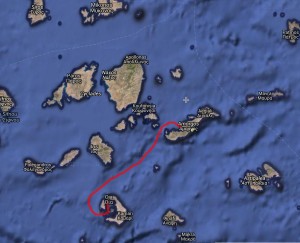 The contrast was startling between Santorini and laid-back Amorgos, where we stayed for over a week and met almost no one who was not Greek.
The contrast was startling between Santorini and laid-back Amorgos, where we stayed for over a week and met almost no one who was not Greek.
The main attraction that we had heard about and drew us to Amorgos was the Monastery of Panagia Hozoviotissa, also known as the Monastery of the Virgin Mary.
We had seen photos of this vertical bright white monastery, clinging to a remote granite outcropping 300 meters over the sparkling blue water of the Mediterranean, and it reminded us of another dramatically situated monastery we had visited and loved – Tiger’s Nest in Bhutan.
There is also a scene in Luc Besson’s film The Big Blue, where the camera pans up from the gorgeous sea to the Monastery.
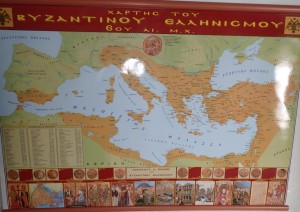
a map on the wall inside the monastery showed (in orange) the impressive scale and scope of the former Greek Empire at the time the Monastery was built
The Monastery is the second oldest in all of Greece, having been built in 1017 by Alexius Comnenus I. It’s hard to imagine how they built such a building 1,000 years ago in such a challenging location. But evidently when there is a strong passion and will, there is a way.
At the time of the Monastery’s construction, Greece was an enormous and powerful empire. This map hanging on the wall of the Monastery shows how large the Greek empire (in orange) was at its peak.
The monastery was created in homage to Grace of Panagia, known as the Virgin Mary, who is the patron saint of the island.
According to written records, an icon of the Virgin Mother arrived on the island from the Holy Land (Hozova in Palestine), and the Monastery’s name translates in Greek to Virgin Mary of Hozova.
I say “arrived on” Amorgos, because the icon wasn’t intended for a permanent home on Amorgos. As the story goes, the icon reached the island in a boat which had run aground, directly below the point on which the monastery stands today. Two locals found the icon and news quickly spread from island to island.
When the news reached Constantinople, the Emperor ordered the construction of the monastery. The icon is still carried around to all the villages on the island every year.
Inside the monastery, you will find narrow passages, steep stairs, and whitewashed walls lined with portraits of Priests and other religious elders. Incense scents the air and elderly monks or priests, who act as guardians of the monastery, will serve you psimeni raki (a local liqueur) flavored with local honey, cinnamon, cloves, and loukoumi. Loukoumi is a local Greek alcoholic drink combining raki or tsikoudia with honey (meli) and several spices, such as cinnamon and clove or other regional herbs. Because of its two key ingredients, raki and honey, rakomelo is digestive and it’s traditionally used by many Greeks as a practical remedy when people suffer from sore throat and coughing.
Women visiting must dress modestly, and the monastery’s rules are stricter than most. Yes, women must have their legs and arms covered, but to my surprise, long pants weren’t acceptable. You must wear a dress or skirt. The monastery provides loaner long scarves that become improvised long skirts for most women visiting.
Amorgos offered other unexpected delights. The medieval mountain top village of “Chora” or main town at the top of the island had curving, cobblestoned lanes colored brightly with bougainvillea against the whitewashed buildings. We sat in a cafe, played Backgammon, sipped local adult beverages and enjoyed a very pleasant afternoon.
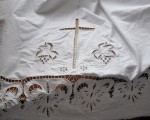 Amorgos has abundant olive and grape groves and makes fine olive oil and wine on the island. Local women also practice age-old traditions of making handicrafts, especially embroidery.
Amorgos has abundant olive and grape groves and makes fine olive oil and wine on the island. Local women also practice age-old traditions of making handicrafts, especially embroidery.
We also discovered the top of Amorgos is covered with ancient windmills. They are no longer used, but still stand guard over the sea.

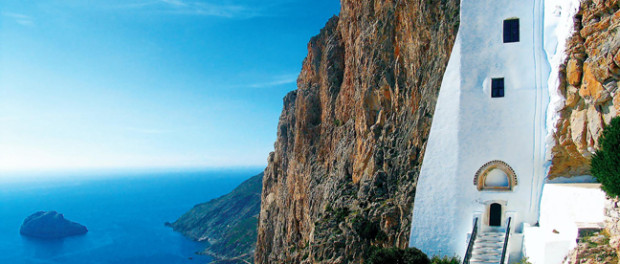
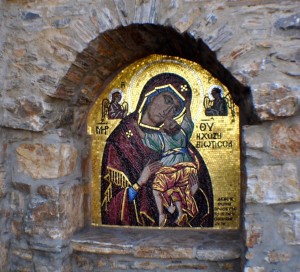
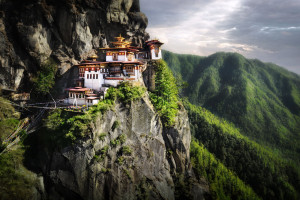
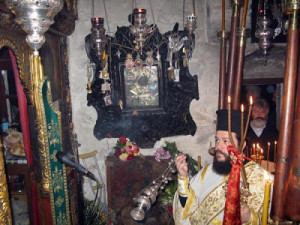
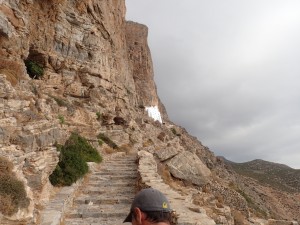
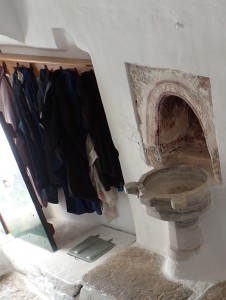
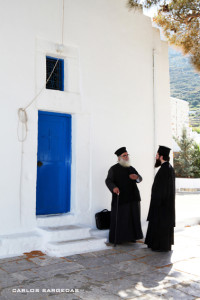
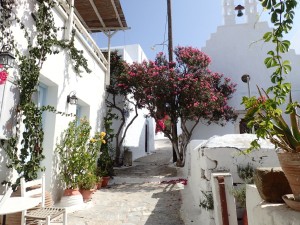
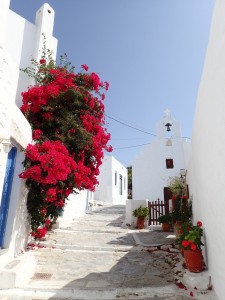
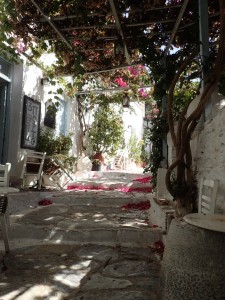
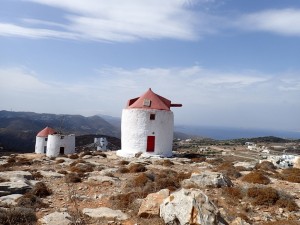





Leave a comment